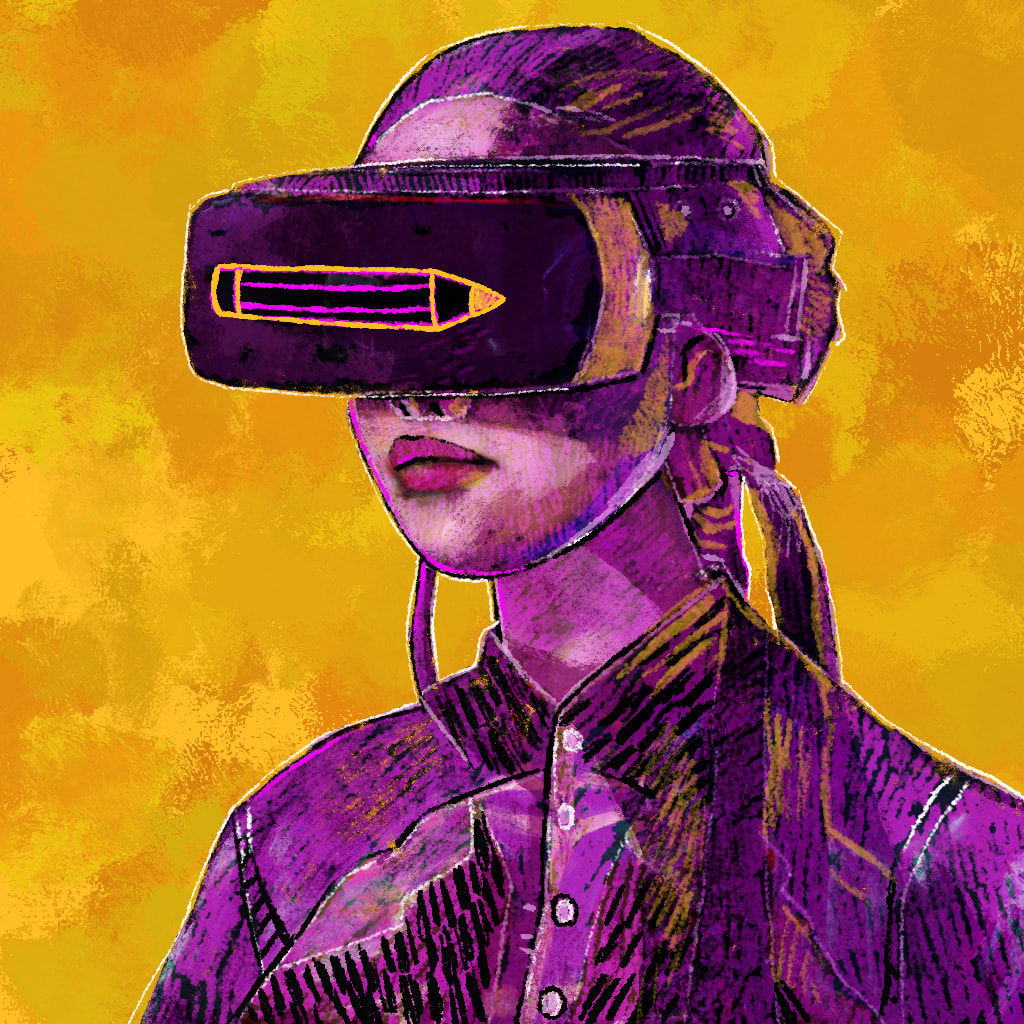|
(illustration SVdB) In the ever-evolving landscape of technology, two groundbreaking advancements, Artificial Intelligence (AI) and Augmented Reality (AR), are reshaping the way we perceive and interact with the world around us. While AI revolutionizes creativity and design processes, AR introduces immersive experiences that blur the lines between the physical and digital realms. In this blog, we delve into the fusion of AI and AR and explore its profound impact on the future of illustration. The Rise of AI in Illustration: AI has emerged as a powerful tool in the realm of illustration, offering artists new avenues for creativity and efficiency. With AI-powered tools, illustrators can now streamline their workflows, generate ideas, and enhance their artistic capabilities. One of the most notable applications of AI in illustration is the creation of generative art, where algorithms autonomously produce intricate designs and patterns based on predefined parameters. This not only expands the creative horizons of artists but also challenges traditional notions of authorship and creativity. Furthermore, AI-driven style transfer algorithms enable illustrators to effortlessly apply various artistic styles to their work, from impressionism to cubism, with just a few clicks. This versatility empowers artists to experiment with different aesthetics and push the boundaries of traditional illustration techniques. Additionally, AI-powered image recognition and classification tools facilitate the process of content creation by automatically tagging and categorizing visual assets, thereby streamlining the search for reference materials and inspiration. Augmented Reality: Bridging the Physical and Digital Realms: Augmented Reality has rapidly gained momentum as a transformative technology that overlays digital content onto the physical world, thereby enhancing our perception of reality. With the proliferation of AR-enabled devices, such as smartphones and smart glasses, users can seamlessly integrate virtual elements into their surroundings, opening up new possibilities for storytelling and interactive experiences. In the realm of illustration, AR offers a dynamic canvas for artists to showcase their work in immersive and interactive ways. Through AR applications, viewers can experience illustrations come to life, with characters animated and environments dynamically evolving as they explore the augmented space. This interactive dimension not only captivates audiences but also fosters deeper engagement and emotional connections with the artwork. Moreover, AR enables illustrators to transcend the constraints of traditional media by integrating digital elements into physical spaces. Whether it's murals that transform into animated narratives or interactive installations that respond to audience interactions, AR empowers illustrators to create multisensory experiences that transcend the limitations of static imagery. The Synergy of AI and AR: The convergence of AI and AR holds immense potential for the future of illustration, as it combines the creative prowess of AI with the immersive capabilities of AR to redefine the way we perceive and interact with visual content. By leveraging AI-generated assets within AR environments, illustrators can create dynamic and adaptive experiences that respond to user input and environmental cues. For instance, AI-powered character generators can autonomously create diverse and lifelike characters, which can then be seamlessly integrated into AR scenes, where they interact with users in real-time. Additionally, AI-driven content personalization algorithms can tailor AR experiences to individual preferences, delivering personalized narratives and interactions based on user demographics and behavior. Furthermore, the marriage of AI and AR democratizes the creation and consumption of illustration, as it empowers individuals with limited artistic skills to express themselves creatively in AR environments. Through intuitive AI-driven tools, users can easily generate and customize AR content, transforming everyday spaces into personalized canvases for self-expression and storytelling. Conclusion: As AI and AR continue to advance and converge, the future of illustration is poised for a paradigm shift. The synergy of AI-driven creativity and AR-enabled immersion promises to usher in a new era of interactive and immersive storytelling, where the boundaries between the physical and digital worlds dissolve. Whether it's AI-generated characters coming to life in AR environments or immersive illustrations that respond to user interactions, the fusion of AI and AR holds boundless possibilities for the evolution of illustration in the digital age. #FutureIllustration #AIillustration #AugmentedRealityArt #DigitalArtistry #TechIllustration #ARIllustration #IllustrationTech #ArtificialIntelligenceArt #ARDesign #DigitalImagination #IllustrationInnovation #ARCreation #AIcreativity #NextGenIllustration #AugmentedCreativity #DigitalInnovation #ARArtists #AIInspiredArt #IllustrationTrends #FutureTechArt
0 Comments
|
AuthorSeppe is a Ostend-based visual-designer and illustrator. ArchivesCategories |


 RSS Feed
RSS Feed